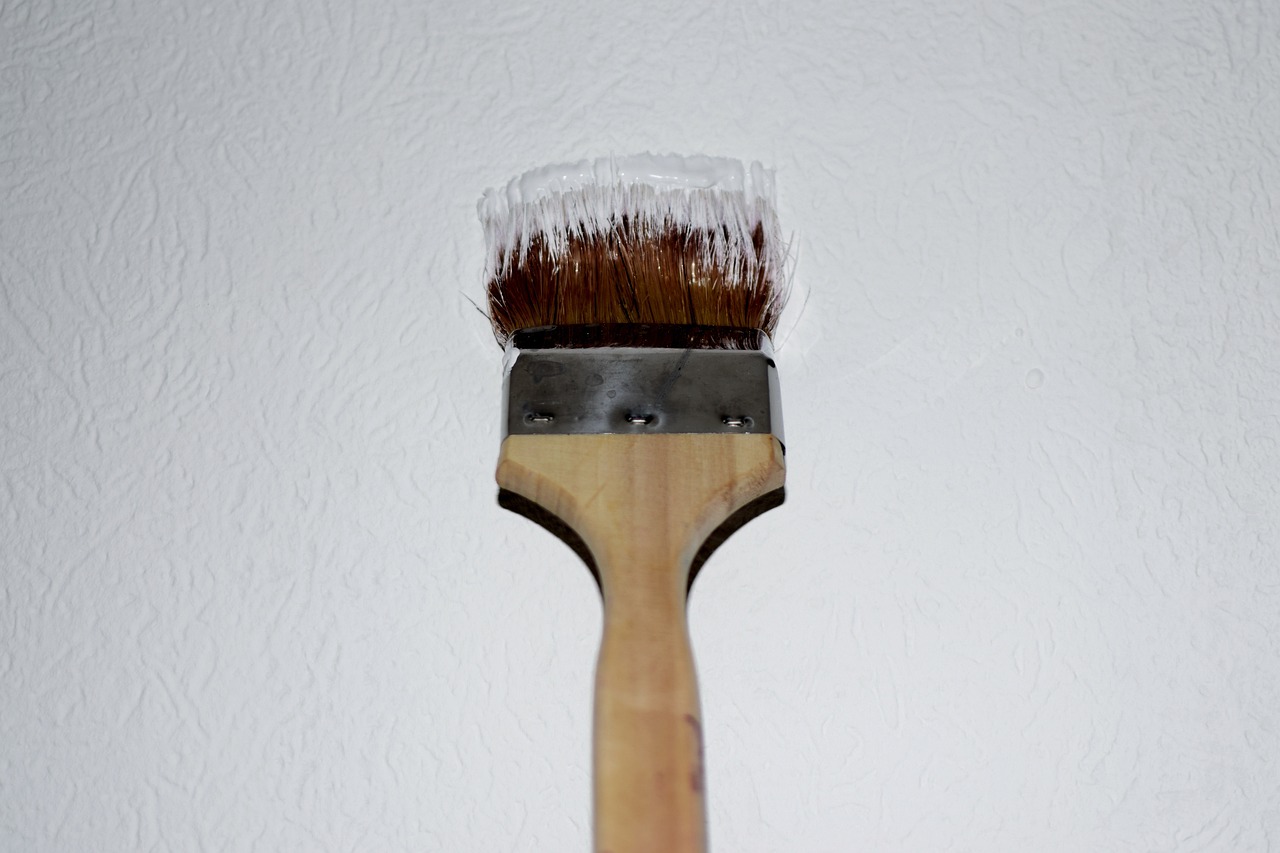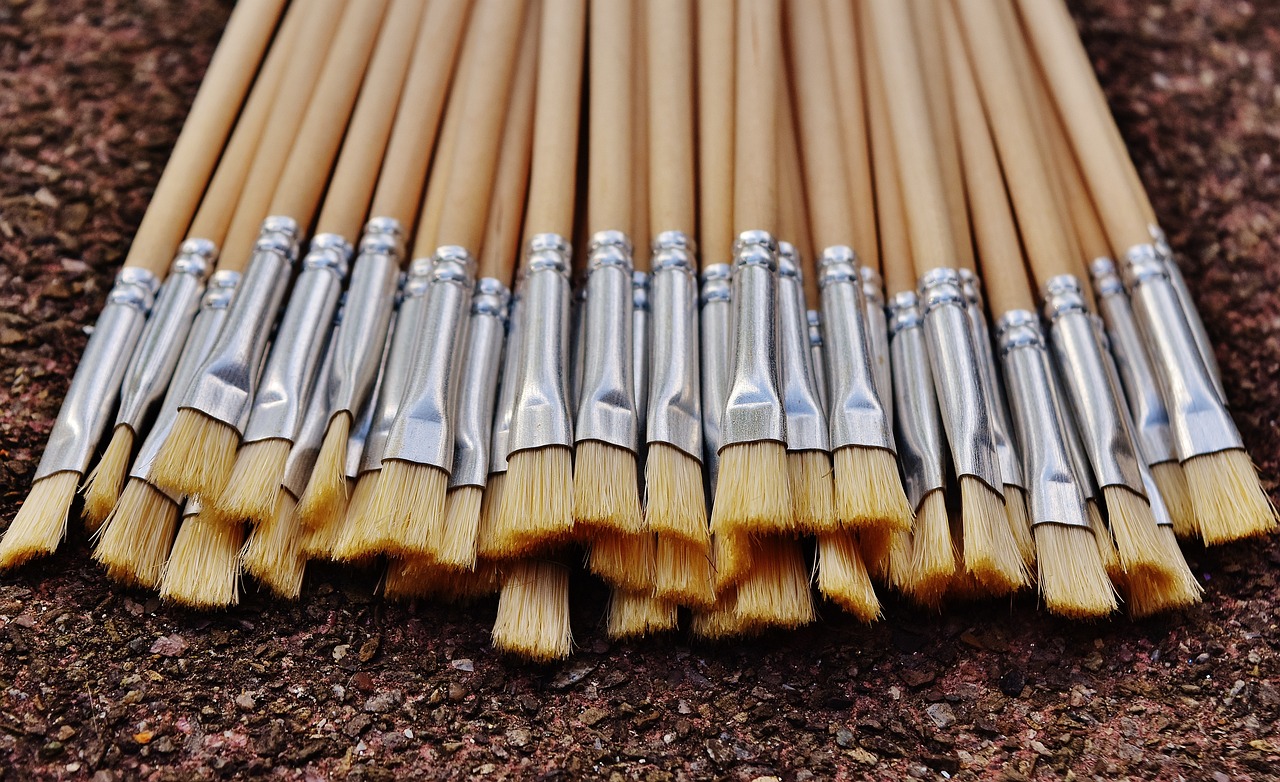How to Clean and Maintain Your Painting Brushes
As an artist or hobbyist, your painting brushes are your **tools of the trade**. They are the instruments that translate your imagination onto canvas, and like any tool, they require proper care and maintenance to perform at their best. Think of your brushes as the **extension of your creativity**; when they are well-maintained, they can help you achieve stunning results. This article dives into the essential tips and techniques for cleaning and maintaining your painting brushes, ensuring their longevity and optimal performance.
Understanding why proper brush maintenance is crucial can enhance your painting experience and improve the quality of your artwork. Just like a chef wouldn't use a dull knife, an artist shouldn't work with worn-out brushes. Well-cared-for brushes yield better results, allowing for smooth strokes and precise detailing. Furthermore, investing time in brush maintenance can save you money in the long run. Instead of constantly replacing brushes, you'll extend their lifespan and keep your art budget intact.
Cleaning your brushes immediately after use is vital. If paint dries on the bristles, it can lead to irreversible damage, making your brushes ineffective. The cleaning process varies depending on the type of paint you use. Here are some best practices for cleaning different types of paint brushes effectively:
Watercolor brushes are often made with delicate bristles that require gentle handling. To clean them, follow these steps:
- Rinse the brush under lukewarm water to remove excess paint.
- Use a mild soap or brush cleaner to lather the bristles gently.
- Rinse thoroughly until the water runs clear and reshape the brush head.
- Lay the brush flat to dry or hang it upside down to prevent water from seeping into the ferrule.
Acrylic paint can be particularly challenging to remove, especially once it dries. To keep your acrylic brushes in top shape, try these techniques:
- Immediately rinse your brushes with water after use to prevent the paint from hardening.
- If paint has dried, soak the brushes in warm soapy water for a few minutes.
- Gently work the bristles with your fingers to dislodge any remaining paint.
- Rinse thoroughly and reshape the bristles for future use.
Cleaning oil brushes requires special solvents and techniques. Here’s how to do it effectively:
- Use a solvent like turpentine or mineral spirits to remove excess paint.
- Swirl the brush in the solvent and wipe it on a rag to remove paint.
- Follow up with soap and water to ensure all residue is gone.
- Reshape the bristles and lay them flat to dry.
Proper storage of brushes is essential for maintaining their shape and functionality. If you toss them in a drawer or leave them lying around, you risk damaging the bristles and ferrules. Here are some effective storage methods:
Choosing the right storage position is vital. Vertical storage allows brushes to stand upright, which prevents bristles from bending. On the other hand, horizontal storage can be beneficial for brushes with delicate bristles. Consider the following:
| Storage Method | Advantages | Disadvantages |
|---|---|---|
| Vertical | Prevents bristle bending | Requires more space |
| Horizontal | Space-efficient | Risk of bristle damage if not careful |
Brush cases and holders can significantly enhance the longevity of your brushes. These storage solutions keep your brushes organized and protected from dust and damage. Look for cases that offer compartments to separate different sizes and types of brushes. This way, you’ll always have your tools ready for action, just like a knight with their sword!
Recognizing when it's time to replace your brushes is essential for maintaining quality in your artwork. Here are some key indicators that suggest your brushes may no longer be effective:
- Frayed or split bristles that can’t be reshaped.
- Loss of stiffness, making it hard to control strokes.
- Paint buildup that cleaning can’t resolve.
1. How often should I clean my brushes?
It’s best to clean your brushes immediately after each use. This prevents paint from drying and damaging the bristles.
2. Can I use regular soap to clean my brushes?
Yes, a mild soap can be effective, but specialized brush cleaners often provide better results, especially for stubborn paint.
3. How can I tell if my brush is beyond repair?
If the bristles are frayed, split, or if the brush has lost its shape despite cleaning, it may be time to replace it.
4. Is it necessary to store brushes in a case?
While not mandatory, storing brushes in a case helps protect them from damage and keeps them organized.

Importance of Brush Maintenance
When it comes to painting, your brushes are your best friends. They’re the tools that help you express your creativity, and just like any good friend, they deserve to be treated well. Proper brush maintenance is not just a chore; it’s a crucial part of the artistic process that can significantly enhance your painting experience. Think about it: using a well-maintained brush can transform your artwork from mediocre to magnificent. Why is this so important? Because a clean and well-cared-for brush can lead to smoother strokes, better color application, and ultimately, a more polished piece of art.
Imagine trying to paint with a brush that’s caked with dried paint or frayed bristles. Frustrating, right? Not only does it affect your technique, but it can also compromise the quality of your work. On the flip side, maintaining your brushes can save you money in the long run. High-quality brushes can be quite an investment, and with proper care, you can extend their lifespan significantly. Instead of constantly replacing brushes, why not invest a little time in maintenance? It’s a win-win situation!
Moreover, understanding the importance of brush maintenance can elevate your skills as an artist. When you take the time to clean and care for your brushes, you develop a deeper connection with your tools. You start to notice how different brushes behave with various paints and techniques. This knowledge can open up a world of possibilities in your artwork. In essence, brush maintenance is not just about keeping your tools clean; it’s about enhancing your overall artistic journey.
So, what are the key benefits of proper brush maintenance? Let’s break it down:
- Improved Performance: Clean brushes deliver better results, allowing for more precise and controlled strokes.
- Cost Efficiency: Taking care of your brushes means fewer replacements, saving you money over time.
- Enhanced Creativity: A well-maintained brush can inspire you to try new techniques and styles without the frustration of poor performance.
In conclusion, brush maintenance is a fundamental aspect of painting that should never be overlooked. By treating your brushes with the care they deserve, you not only improve the quality of your art but also extend the life of your tools. Remember, a happy brush leads to a happy artist!

Cleaning Brushes After Use
Cleaning your brushes immediately after use is crucial for maintaining their quality and ensuring they last longer. Imagine trying to paint with a brush that has dried paint caked on it; it’s not only frustrating but can ruin your artwork. To avoid this, make it a habit to clean your brushes right after you finish painting. This not only keeps the bristles in good shape but also saves you money in the long run by preventing the need to replace brushes frequently.
When it comes to cleaning, the method you choose largely depends on the type of paint you’ve been using. For instance, watercolor, acrylic, and oil paints each require different cleaning techniques. Here’s a quick breakdown:
| Type of Paint | Cleaning Method |
|---|---|
| Watercolor | Rinse with water and reshape the bristles. |
| Acrylic | Use warm water and soap, rinse thoroughly. |
| Oil | Use solvents like turpentine or mineral spirits. |
For watercolor brushes, the cleaning process is relatively straightforward. Simply rinse the brush under lukewarm water, gently using your fingers to remove any paint. It’s essential to reshape the bristles while they’re wet to maintain their point. Avoid using hot water, as it can damage the delicate hairs.
Cleaning acrylic brushes can be a bit more challenging due to the fast-drying nature of acrylic paint. After rinsing the brush under warm water, apply a small amount of mild soap to the bristles and work it into a lather. Rinse thoroughly and repeat if necessary until the water runs clear. Remember, never let acrylic paint dry on your brushes, as it can become almost impossible to remove.
Oil brushes require a different approach entirely. Start by wiping off excess paint with a rag or paper towel. Then, dip the brush into a solvent like turpentine or mineral spirits. Swirl the brush in the solvent until the paint dissolves. After that, wash the brush with soap and water to remove any remaining solvent. Always ensure you’re working in a well-ventilated area when using solvents, as they can be quite potent.
Regardless of the type of brush, the key takeaway is to clean them right after use. This habit not only prolongs the life of your brushes but also enhances your painting experience by ensuring that each stroke is as smooth and precise as possible. So, next time you finish a painting session, take those extra few minutes to give your brushes the care they deserve!

Watercolor Brush Cleaning Techniques
Cleaning watercolor brushes is an art in itself, and it’s crucial to do it right to maintain the delicate bristles and overall performance of your tools. Imagine trying to paint with a brush that feels stiff and unyielding; it can completely ruin your creative flow! To avoid this, you should clean your brushes immediately after use. The key is to use lukewarm water and a gentle touch. Start by rinsing the brush under running water, making sure to point the bristles downward to prevent water from seeping into the ferrule, which can loosen the glue over time.
Next, gently swirl the brush in a container filled with clean water. This allows the pigments to dissolve. If you notice that the water is changing color, it’s a sign that you need to change it. Always use clean water for rinsing, as dirty water can reintroduce paint particles to your brush, negating your hard work. For stubborn stains, you can use a mild soap or brush cleaner specifically designed for watercolor brushes. Just a drop is enough; lather it gently between your fingers and work it through the bristles.
After cleaning, rinse the brush thoroughly again to ensure all soap residue is gone. It’s essential to reshape the brush while it’s wet; simply use your fingers to gently mold the bristles back into their original form. This step is vital because it helps maintain the brush’s shape for precise strokes in your next painting session. Finally, lay the brush flat on a clean cloth or paper towel to dry. Avoid standing the brush upright in a jar, as this can cause the bristles to bend and lose their shape.
To summarize the cleaning techniques, here’s a quick reference:
| Step | Technique |
|---|---|
| 1 | Rinse under lukewarm water, bristles facing down. |
| 2 | Swirl in clean water to dissolve pigments. |
| 3 | Use mild soap for stubborn stains, lather gently. |
| 4 | Rinse thoroughly to remove soap. |
| 5 | Reshape bristles and lay flat to dry. |
By following these simple yet effective techniques, you can ensure that your watercolor brushes remain in top condition, ready to create beautiful works of art whenever inspiration strikes. Remember, a well-maintained brush is not just a tool; it’s an extension of your artistic expression!

Acrylic Brush Cleaning Methods
Cleaning acrylic brushes can feel like a daunting task, especially since acrylic paint dries quickly and can harden on the bristles if not addressed promptly. However, with the right techniques, you can ensure that your brushes remain in top-notch condition, ready for your next masterpiece. The key to effective cleaning lies in acting swiftly and using the proper materials.
First and foremost, always have a container of water nearby. Acrylic paint is water-soluble when wet, which means that rinsing your brushes in water soon after use can significantly ease the cleaning process. Begin by rinsing your brushes under lukewarm water while gently working the bristles with your fingers. This initial rinse helps to remove most of the paint without damaging the bristles.
Once you've rinsed off the excess paint, it's time to use a cleaning solution. You can choose between commercially available brush cleaners or create a simple homemade solution. A mixture of warm water and a few drops of dish soap can work wonders. Soak the bristles in the solution for a few minutes, then gently swirl the brush in the water. This action helps to break down any remaining paint particles.
After soaking, rinse the brush again under running water. Be sure to shape the bristles back into their original form to prevent them from splaying out. If you notice that some paint remains, you might need to repeat the cleaning process a couple of times. A soft cloth can also be used to wipe the bristles gently, but avoid using anything abrasive that might damage the hairs.
For stubborn paint, consider using a brush cleaning soap or a specialized acrylic brush cleaner. These products are designed to break down acrylic paint effectively and can save you time and effort. Apply a small amount of the cleaner to the bristles and work it in gently, then rinse thoroughly. Remember to always follow the manufacturer's instructions for any products you use.
Finally, ensure that you dry your brushes properly. Lay them flat on a clean towel or hang them upside down to prevent water from seeping into the ferrule, which can weaken the glue and cause bristles to fall out. Proper drying is just as crucial as cleaning, as it helps maintain the integrity and longevity of your brushes.
In summary, keeping your acrylic brushes clean is essential for maintaining their performance. By rinsing promptly, using the right cleaning solutions, and ensuring proper drying, you can extend the life of your brushes and continue creating beautiful artwork. Remember, a little care goes a long way!
- How often should I clean my acrylic brushes? It's best to clean your brushes immediately after use to prevent the paint from drying on the bristles.
- Can I use regular soap to clean my acrylic brushes? Yes, a mild dish soap mixed with water can be effective, but specialized brush cleaners are often more efficient for stubborn paint.
- Is it necessary to reshape my brushes after cleaning? Absolutely! Reshaping helps maintain their form and ensures better painting results in the future.
- What should I do if my brushes are still stiff after cleaning? Try soaking them in warm water for a few more minutes or use a brush conditioner to help restore their softness.

Oil Brush Cleaning Essentials
Cleaning oil brushes is essential for maintaining their performance and ensuring they last through many painting sessions. Since oil paint can be quite stubborn and tends to dry quickly, it's crucial to adopt a proper cleaning routine right after you finish your artwork. Think of your brushes as the instruments of your creativity; if they’re not in top shape, your painting will suffer. So, let’s dive into the essentials!
First off, you’ll need the right cleaning supplies. A good quality solvent is your best friend here. Common options include mineral spirits or turpentine. These solvents are effective at breaking down the oils in the paint, making it easier to clean the bristles. It’s important to use a well-ventilated area when working with these solvents, as they can emit strong fumes. Always remember to wear gloves to protect your skin from irritation.
Here’s a simple step-by-step guide to cleaning your oil brushes:
- Step 1: Pour a small amount of your chosen solvent into a container. A glass jar works well, as it allows you to see the color of the paint as it comes off.
- Step 2: Dip the brush into the solvent and gently swirl it around. Avoid scrubbing too hard, as this can damage the bristles.
- Step 3: Wipe the brush on the edge of the container to remove excess paint and solvent. You can also use a paper towel for this.
- Step 4: Repeat the process until the brush is clean. You may need to change the solvent if it becomes too dirty.
- Step 5: Once clean, wash the brush with warm, soapy water to remove any remaining solvent. Rinse thoroughly.
- Step 6: Reshape the bristles gently and lay the brush flat to dry. Avoid standing the brush upright, as this can cause the bristles to splay.
By following these steps, you can ensure that your oil brushes remain in excellent condition. However, it’s also wise to periodically check the bristles for any signs of damage. If you notice that the bristles are frayed or misshapen, it might be time to replace the brush. Remember, a well-maintained brush will not only perform better but will also enhance the quality of your artwork!
Q: How often should I clean my oil brushes?
A: Ideally, you should clean your brushes immediately after use. If you’re taking a break during a painting session, you can wrap them in plastic wrap to keep them from drying out.
Q: Can I use regular soap and water to clean oil brushes?
A: While soap and water can be effective after using solvents, they are not sufficient on their own for removing oil paint. Always start with a solvent before washing with soap.
Q: What should I do if my brush bristles are stiff?
A: If your brushes have become stiff, try soaking them in a solvent for a few minutes, then follow the cleaning steps. If they still don't soften, it may be time to replace them.

Storing Brushes Properly
When it comes to painting brushes, proper storage is just as important as cleaning. Think of your brushes as the tools of your artistic trade; if you don’t take care of them, they won’t take care of you! Storing your brushes correctly can help maintain their shape, prevent bristle damage, and ensure they are always ready for your next masterpiece. Imagine trying to paint with a brush that has frayed bristles—it's not a pretty picture!
One of the first things to consider is the position in which you store your brushes. There are two primary methods: vertical and horizontal. Each has its own advantages and disadvantages. Storing brushes vertically—bristles facing up—can help prevent them from bending or losing their shape. This method is particularly effective for watercolor brushes and acrylic brushes, which are more delicate. However, if you choose this method, make sure to use a container that allows for enough space between the brushes to avoid them rubbing against each other.
On the other hand, horizontal storage can also be beneficial, especially for oil brushes. This method allows you to lay the brushes flat, which can help prevent any paint residue from settling in the ferrule (the metal part of the brush). It's like laying your tools down on a workbench after a long day; they’re ready for the next use without the risk of damage!
Another excellent option for storing your brushes is using brush cases or holders. These storage solutions can significantly enhance the longevity of your brushes by keeping them organized and protected from dust and other potential damage. Brush cases often come with compartments, making it easy to separate different types of brushes, which is essential for artists who use a variety of mediums. You wouldn’t want your watercolor brushes to mingle with your oil brushes, right? They have different cleaning and maintenance needs!
Here’s a quick comparison of the two storage methods:
| Storage Method | Advantages | Disadvantages |
|---|---|---|
| Vertical Storage | Prevents bristle bending; easy access | May require more space; brushes can touch |
| Horizontal Storage | Prevents paint residue settling; compact | Less accessible; can take up more space |
Ultimately, the choice between vertical and horizontal storage comes down to personal preference and the types of brushes you use. Regardless of the method you choose, remember to keep your brushes in a clean and dry environment. Avoid exposing them to extreme temperatures or humidity, as these factors can warp the bristles and damage the ferrule.
In conclusion, taking the time to store your brushes properly is an investment in your art. Just like any other tool, they deserve a little TLC to ensure they perform at their best. So, treat your brushes well, and they will reward you with beautiful strokes and vibrant colors in your artwork!
Q: How often should I clean my brushes?
A: It’s best to clean your brushes after every use. This prevents paint from drying in the bristles and keeps them in top condition.
Q: Can I store my brushes in a drawer?
A: While you can store brushes in a drawer, it's better to keep them upright or flat in a case to avoid damage and maintain their shape.
Q: What is the best way to dry my brushes after cleaning?
A: After cleaning, gently reshape the bristles and lay them flat on a clean towel to dry. Avoid standing them upright in a cup while wet, as this can cause water to seep into the ferrule.

Vertical vs. Horizontal Storage
When it comes to storing your painting brushes, the debate between vertical and horizontal storage is more than just a matter of personal preference; it can significantly impact the longevity and performance of your brushes. Imagine your brushes as delicate flowers in a garden; the way you place them can either help them thrive or lead them to wilt prematurely. Each method has its pros and cons, and understanding these can help you make an informed decision.
Storing brushes vertically is often recommended by artists for several reasons. First, it allows the bristles to hang down, preventing them from bending or becoming misshapen. This method is particularly beneficial for brushes with soft, flexible bristles, such as watercolor brushes. Additionally, vertical storage can help keep the ferrules (the metal part that holds the bristles) free from moisture and paint residue, which can cause rust and degradation over time. However, if you opt for vertical storage, ensure that the brushes are placed in a container that is deep enough to prevent them from tipping over.
On the other hand, horizontal storage can be advantageous for certain types of brushes, especially those with stiffer bristles, like acrylic and oil brushes. When laid flat, these brushes can retain their shape and prevent any unwanted pressure that might occur if they're stored upright. However, the downside is that horizontal storage can lead to bristles touching surfaces that may harbor paint or dirt, which can compromise their integrity. To mitigate this, consider using a clean, soft cloth or paper towel to create a barrier between your brushes and the storage surface.
Ultimately, the choice between vertical and horizontal storage comes down to the type of brushes you own and your personal working style. Here’s a quick comparison of both methods:
| Storage Method | Advantages | Disadvantages |
|---|---|---|
| Vertical |
|
|
| Horizontal |
|
|
In conclusion, whether you choose to store your brushes vertically or horizontally, the key is to ensure they are protected from damage. Consider your brush types, your workspace, and how often you paint. With a little thought and care, you'll keep your brushes in top-notch condition, ready to create your next masterpiece!
Q: How often should I clean my brushes?
A: It's best to clean your brushes immediately after each use to prevent paint from drying and damaging the bristles.
Q: Can I use the same cleaning method for all types of brushes?
A: No, different types of brushes (watercolor, acrylic, oil) require specific cleaning methods to maintain their quality.
Q: Is it necessary to replace my brushes regularly?
A: Yes, recognizing the signs of wear and tear is crucial for maintaining quality in your artwork. If your brushes are frayed or losing their shape, it may be time to replace them.

Using Brush Cases and Holders
When it comes to preserving the life of your painting brushes, is an absolute game-changer. Imagine investing in a high-quality set of brushes only to see them fray and lose their shape because they were tossed into a drawer or left lying around. Proper storage is like giving your brushes a cozy home where they can rest and stay protected from damage. Brush cases and holders not only keep your brushes organized but also ensure that they maintain their original shape and functionality.
First off, let’s talk about the different types of brush cases available. There are hard cases designed to provide maximum protection and soft cases that are lightweight and portable. Hard cases are perfect for artists who travel often or need to transport their brushes to classes or workshops. They usually come with compartments that prevent the brushes from knocking against each other, which can cause bristle damage. On the other hand, soft cases are easy to pack and can fit into larger bags, making them ideal for quick trips or everyday use.
Additionally, brush holders, which can be as simple as a cup or a more sophisticated holder with multiple slots, help keep brushes upright and separated. This is crucial because when brushes are stored upright, the bristles are less likely to bend or get crushed. If you’re a watercolor artist, for instance, you might want to consider a holder that allows your brushes to dry without being cramped, as moisture can lead to mold or mildew.
Another factor to consider is the material of the brush case or holder. Wood, fabric, and plastic are common materials, each offering different benefits. Wooden cases often provide a classic aesthetic and durability, while fabric cases can be lightweight and portable. Plastic holders are usually easy to clean, which is a significant advantage if you frequently use messy paints.
When selecting a brush case or holder, think about your specific needs:
- Do you need something portable for travel?
- Are you looking for maximum protection for your high-end brushes?
- Do you want a case that allows for easy access and visibility of your brushes?
In conclusion, investing in a good brush case or holder is not just about aesthetics; it’s about the longevity and performance of your brushes. By keeping them organized and protected, you’re ensuring that each stroke you make is as vibrant and precise as possible. So next time you’re shopping for art supplies, don’t overlook the importance of these essential storage solutions!
Q: How often should I clean my brushes?
A: It’s best to clean your brushes immediately after each use to prevent paint from drying on the bristles.
Q: Can I use any container to store my brushes?
A: While you can use any container, it’s advisable to use cases and holders specifically designed for brushes to maintain their shape and prevent damage.
Q: What should I do if my brushes are already damaged?
A: If your brushes are frayed or misshapen, you can try reshaping them with warm water and conditioner, but if they are too damaged, it might be time to invest in new brushes.

Signs Your Brushes Need Replacement
Recognizing when it's time to replace your brushes is crucial for maintaining the quality of your artwork. Just like a chef wouldn't use a dull knife, an artist shouldn't work with worn-out brushes. The effectiveness of your painting tools directly impacts the results you achieve on canvas. So, how do you know when your brushes have seen better days? Here are some telltale signs to watch out for:
- Frayed Bristles: If you notice that the bristles of your brush are splayed out or frayed, it’s a clear indicator that they have lost their original shape. Frayed bristles can lead to uneven application of paint, making it difficult to achieve clean lines and smooth strokes.
- Loss of Resilience: A good brush should have a certain amount of stiffness and bounce. If your brush feels limp and doesn’t spring back into shape after applying pressure, it might be time to say goodbye.
- Paint Build-Up: Over time, paint can accumulate in the ferrule (the metal part that holds the bristles). If you find that you can’t fully clean your brush, and there’s a noticeable build-up of dried paint, it can affect the brush’s performance and lead to poor results.
- Unpleasant Odors: Brushes used for oil paints or other mediums can sometimes retain odors even after cleaning. If your brush smells funky and you can’t get rid of the scent, it might be harboring old paint residue that could affect your new work.
- Discoloration: If you notice that your brush bristles have changed color, particularly if they are supposed to be white or light-colored, this could indicate that they are stained and may not perform well.
When you notice one or more of these signs, it’s essential to evaluate whether it's worth trying to salvage the brush or if it’s time for a replacement. Investing in quality brushes is key, as they can significantly enhance your painting experience and the final outcome of your artwork. Remember, a well-maintained brush not only lasts longer but also provides better results, making your creative journey more enjoyable and fulfilling.
In conclusion, taking the time to assess your brushes regularly will help you maintain a high standard in your art. Just as you wouldn't compromise on the quality of your paint or canvas, don't let worn-out brushes hold you back. Embrace the change when necessary, and keep your toolkit fresh and effective!
Here are some common questions regarding brush maintenance and replacement:
- How often should I replace my brushes? It depends on usage, but if you notice any of the signs mentioned above, it’s time to consider replacement.
- Can I restore a damaged brush? In some cases, you can reshape and clean a brush, but if it's too worn or frayed, it might be better to replace it.
- What types of brushes last the longest? Generally, high-quality brushes made from natural hairs tend to last longer than synthetic ones, but proper care is essential for both types.
Frequently Asked Questions
- How often should I clean my painting brushes?
It's best to clean your brushes immediately after each use. This prevents paint from drying and damaging the bristles, ensuring they last longer and perform better.
- What is the best way to clean watercolor brushes?
For watercolor brushes, gently rinse them in lukewarm water, using your fingers to reshape the bristles. Avoid using soap unless absolutely necessary, as it can sometimes affect the brush’s performance.
- Can I use regular soap to clean acrylic brushes?
While you can use regular soap, it's more effective to use a brush cleaner specifically designed for acrylic paints. This helps break down the paint more efficiently and protects the bristles.
- What should I use to clean oil painting brushes?
Oil brushes require solvents like mineral spirits or turpentine for cleaning. Make sure to follow up with soap and water to remove any residual solvent.
- How should I store my brushes to prolong their life?
Storing brushes vertically with the bristles facing up is ideal. If you must store them horizontally, ensure they are laid flat in a protective case to avoid bending the bristles.
- Is it better to use a brush case or a holder?
Both have their advantages! A brush case offers protection during transport, while a holder keeps your brushes organized and accessible at your workspace. Choose based on your needs!
- What are the signs that my brushes need to be replaced?
If you notice frayed bristles, loss of shape, or difficulty in applying paint evenly, it’s time to consider replacing your brushes. Quality tools are essential for quality artwork!



















